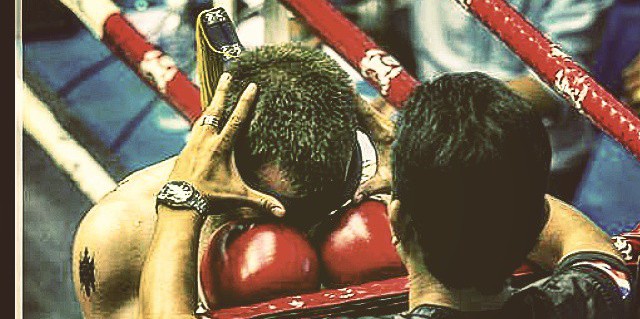“One-two, teep, kick, spinning elbow into…erm…maybe a jumping elbow or something…”
Have you ever been hitting pads and had someone call a combo like that?
Have you ever called for a combo like that whilst you were holding pads?
It’s an extreme example, but only by a little. Almost always, these come from relatively inexperienced training partners essentially making up long chains of techniques on the fly and then calling it a “combo”.
And you know what? I get it. You’re new (or maybe not so new anymore), you’re keen and eager to do some cool shit. You want to give your training partner a good session and you’re keen to avoid the dull monotony of “one-two-kick, one-two-kick”.
But this isn’t the way to go.
In a real, live fight situation, that 10-piece combo including every cool spinning, jumping, cartwheeling technique you can think has literally ZERO chance of even being completed, never mind landing the spectacular, crowd-wowing KO you imagined. Fights are fluid, fighters both acting and reacting simultaneously, the precise outlay of the battlefield shifting with every blow. Shots land and create new openings, a fighter’s defensive choices funnel his opponents’ strategy down certain pathways, and no matter what you are trying to accomplish, you can be certain your opponent is working equally hard to prevent you from accomplishing it.
It’s something a cliché, but only because it is absolutely, 100% true…
Basics win fights.
Muay Thai has eight fundamental techniques – jab, cross, hook, uppercut, round kick, teep, knee, elbow. The key to succeeding in Muay Thai is not to possess knowledge of some super-secret “death touch” technique that allows you to defeat all challengers. The key is simply to become exceptionally proficient at these eight techniques and their implementation.
How do you get better at these techniques? Simple. You practice them. Again and again and again. Practice them until your body is capable of performing them proficiently without conscious thought. Practice them until you dream about them in your sleep. Become obsessed. Start with the fundamentals of the technique (such as turning your hips, rotating on the ball of your foot and swinging the arm down when you kick), then as you progress, fine tune the details (placement and timing of kicks, kicking from different ranges and against different styles, etc).
There is so much to learn, and then perfect, you could spend a lifetime working on it and still have more to do.
Another cliché is quoting Bruce Lee, but I’m going to do it anyway.
“I fear not the man who has practised a thousand kicks once, but the man who has practised one kick a thousand times.”
Repetition. Repetition. Repetition.
Repeating the same basic, fundamental techniques over and over and over again is the key. Trust me, especially if you are at a beginner or intermediate level, both you and your training partner will benefit from taking this approach.
Of course, holding pads well is more than simply being able to hold for those basic techniques. You also need to understand how to put them together in a seamless manner that resembles the fluidity of a real fight. That mostly comes down to experience. The more you hold pads – provided you are actively engaged in what you are doing (don’t be the asshole who puts no effort into holding for someone but wants good pad work in return) – the more this will make sense.
Do your own learning too. Watch videos of top-level fighters hitting pads (which you should be doing anyway) but focus instead on what their trainers are doing. You will see the most elite fighters in the world practising the exact same techniques as you do every session. It doesn’t matter how good you become, the basics always matter.
I’ll put together an article in the near future on the fundamentals of good pad holding, but for now just remember…
Keep it simple, stupid
check out the below video for some of the best padwork you will EVER see…
